Imagine to be able to take a photo and re-focus it later over and over again, until you are happy with the result. Sounds like a photographer's dream, doesn't it? The Lytro camera promises exactly this, the ability to re-focus a photo after it has been taken. But is it true or is Lytro a hoax? And how does this so-called light field photography work and where, and at which price, can you buy a Lytro camera? Read on to learn more about this fascinating subject, table of contents below, for your convenience.

Lytro Light Field Camera
by Sam
Lytro is the first plenoptic camera that uses light field technology in an affordable consumer camera. A photographic revolution or an over-prized gadget? You decide!
The Astonishing Lytro Camera, now available on Amazon!
Click image for more details! And yes, that square thingie is a real camera and not a telescop ;-)
 |
| Lytro Light Field Camera, 8GB, Electric Blue |
Lytro - How does it work?
The science behind the Lytro camera is called 'light field technology' and, in simple words, works like this: In traditional photography, no matter if digital or film, all light 'stacks up' and is recorded on one single plane, either film or digital sensor. At the same time, when pressing the shutter, the focus and the depth of field are also determinate and can't be changed anymore.
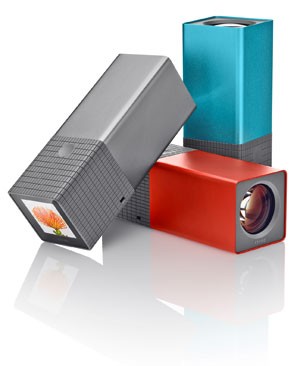 lytro.com used with permission |
In light field photography all light rays from all directions are recorded and the light field sensor, a new innovation and not to be confused with a traditional digital sensor, captures all this information. Special propriety software can now be used to re-focus an image over and over again, by changing the focal plane with help of the recorded information. Imagine it like a complete, mathematical 3D model of your image. As soon as you change the focus, the software adapts the image so that it looks like you had focused on that portion of the image in the first place. No more out of focus images because you pressed the shutter too early, before your camera was finished focusing and no more, oops, I meant to focus there and not there. Sounds good?!
Lytro calls these 'living images' as they can be re-focused after they have been taken. You can see this effect in the composite on the left. Both images are screenshots of the same 'living image', setting the focal plane differently. If you click the image, you see a bigger version. Notice also the slight change in color between the two images! Despite having taken both screenshots shortly one after another from the same screen and having them edited equally, the white balance seems to have shifted also a bit during refocusing. Ehm?!
Lytro Thesis - More than you ever wanted to know about the science behind it.
200+ pages of the thesis by Ren Ng who later developed the first consumer light field technology camera and is today Lytro's CEO. Reading this will increase your IQ by at least 10 points, promised ;-)
Lytro Camera - Wiki
Lytro - Resolution
This might be a deal breaker for those that think more mega pixel are better! The Lytro is marketed by its inventors as a camera to share 'living images' online. They really don't cater to people that want to print out their images! Reason being that the cute 'living image' effect obviously only works when admiring the photos on a computer screen. Once saved as a jpg, they are as normal as any other image taken by any other camera. So, as these images 'work' only on screen, why bother with higher resolution, which only would have increased the price and complicated the production.
- Lytro Image Size -1080x1080px, yup, a meager just over 1MP! This resolution would result result in a tiny print of 2.5x2.5in at 300dpi. But is would be, just, enough to make a decent wallpaper and certainly enough for sharing it on Facebook and the like.
- Lytro File Size - Each image will be around 23MB. Which is not too much considering the data necessary for a truly plenoptic camera.
And anyway, before you can share your images, you need to upload them first to the Lytro website and then share them from there, so image file size (don't confuse that one with image resolution!) is not bad at all. A typical hard drive, for back-up purposes of 500GB could store a whooping 22,000+ Lytro living images. You need to shoot a lot to run out of space ;-)
Hard Drives People are Really Happy with!
... available at Amazon ;-)
 |  |  |
| Buffalo Technology MiniStation Plus 1... | Toshiba Canvio Basics Portable Hard D... | Transcend StoreJet 640 GB USB 2.0 Por... |
Lytro Camera - How Much?
That is an easy question to answer, but you have to remember that the Lytro camera is still only in pre-sale (as of February 2012) and will ship only to the US when released. This might change later, but if you are an international customer you can pre-order the Lytro from their website, let them ship it to a US address when it is released and then somebody else needs to ship it to your home, wherever that is.
Lytro - Amazon and Ebay
Nops, so far the only way to get one is to pre-order it from their website and also then only if you have a US shipping address.
No idea if they plan to market the camera later on on Amazon, but I am sure a few people already pre-ordered theirs for the sole purpose of auctioning it off on Ebay as soon as they have it. You know, scarcity and novelty ;-)
Lytro Camera Costs
- 8GB Version, available in graphite and blue - $399
- 16GB Version, only available in red - $499
Why they don't offer more color / memory combinations is beyond me! What is wrong with 16GB Lytro in blue? Or a 8GB version in red?
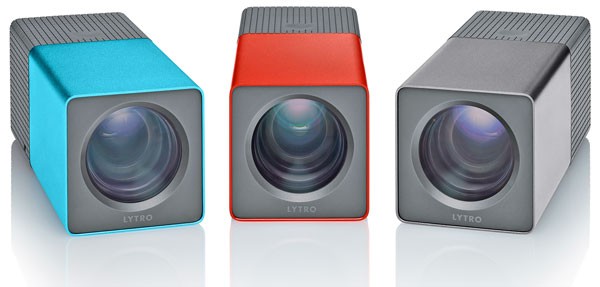 Lytro.com used with permission |
Lytro - Complete Technical Specs
... for us geeks ;-)
Ok, here we go, the complete technical specs for the Lytro Camera, as far as released by the manufacturer as of February 2012. If something new comes to light, I will update the list, promised!
| Spec | Value | Notes |
| Camera Size |
1.6x1.6x4.4in 4x4x11cm 8 ounces 224 grams |
Small and light enough to carry around in your pocket! The Lytro ships with a lens cap, but I am not sure about a viewfinder screen cap, I hope it does, if not scratches are a sure thing when carrying it around in a pocket or bag ... |
| Lens Zoom | 8x optical | Equals 35mm - 280mm, nice range for most uses. As it is a point&shoot this means obviously a fixed lens, no information available about the lens manufacturer. |
| Aperture | f2 | Fixed at f2 that is a camera that shoots wide open across the whole zoom range. Not much possibility to adjust depth of field. |
| Viewfinder |
1.46in 3.65cm
|
Touchscreen and viewfinder in one. |
| Memory | 8GB or 16GB | Fixed and internal, no quick swapping of cards should you run out of space, you will have to download and / or delete some images when you run out of space. |
| Interface / Cable | USB 2.0 | |
| Power Supply | Internal batterie that has to be charged via USB | Bit like a laptop, you have to recharge it by plugging it in. No quick swapping of batteries neither. Also note that you will either need an USB wall charger or a laptop or other device to charge the camera, not very travel friendly! |
| Software | 'Light Field Machine' | Included, but for the moment works exclusively with Macs. |
| Flash | No | Nor planned. |
| Video | No | Might be added to later models. |
|
Missing Information That are the bits I couldn't find any information about ...
|
||
| Minimal / maximal focus distance | That one would be important to know because it would tell us in which range the interactive living images actually work. | |
| ISO Range | No information apart of that it is adjusted automatically. Looking at the pictures, the ISO might be quite high, leading to image quality problems. | |
| Shutter Speed | Also here, no clear information apart of that it is set automatically, together with the ISO. Knowing the shutter speed would be important for photographing fast moving objects. | |
| Shipping | The most I could find was 'early 2012' ... Now we have now February 2012 and they are still not more specific ;-( | |
| Windows Compatibility | Similar to the above, some when in 2012 ... Same for Linux and other OS. | |
Lytro - Camera Review
Can you review a camera like the Lytro that hasn't been released yet? NO! But you can review the images taken with said camera and that are published on the manufacture's website. In case you want to try it out for yourself here the link to the >Lytro Picture Gallery<. Clicking one time on an image will set the focus to that point / plane, clicking twice will zoom into the image. Have fun and don't forget to come back to read the rest of my article ;-)
In case somebody of the Lytro team reads this, I wouldn't mind getting my hands on a prototype to do a Lytro on hands review ;-) Just contact me and I give you my shipping address! I promise I'll put it through the paces and post a detailed review here!
Lytro - Image Quality
That is a big one for me, being a photographer and visual artist since more years I care to admit ;-) If you click on the image at the right site, you will get a slightly bigger version of it. This is just one image, actually a composite of three screen shots of the same living image, of the many I looked at closely to see the image quality the Lytro delivers.
The top image is with the focus set on the butterfly and looks nice, but the next two images, with the focus set on the background show some problems:
Purple Fringing - Notice the purple 'rims' around the spaces between the leaves / branches in the background? This is called 'purple fringing' or 'chromatic aberration' and happens typically in areas where very light and very dark subjects meet, such as branches against a sunny sky. This will be always a problem with the Lytro, due to its fixed, wide open, f2 lens. So best not to try to shot high contrast scenes with it!
Focus - Whilst the inventors claim that you can re-focus your photo anywhere in the image, playing around with the living images on their website shows that not being the case. Subjects very close to the lens will not focus and subjects far away in the background neither. In the middle range the focus is reasonable, but also here, the images could be sharper.
Dynamic Range / Color - The colors seems to be close to life and saturated. So in that aspect the images taken by the Lytro are good.
Noise / Artifacts - When zooming into the images, you will notice a lot of noise and digital artifacts, not only on low-light shots, but even on 'sunny scenes'.
So, in summary I must say that for such an expensive camera the image quality delivered is really not good.
Fun Lytro Alternatives
... a bit on the artistic site for some perhaps ;-)
 |  |
| Lomo JOCO VX5 12MP Digital Holga Camera | SuperHeadz: Digital Harinezumi 2+++ C... |
A Detour - Bokeh and Depth of Field
Depth of field is the amount of the image that is in sharp focus with a gradual and smooth declining of the focus towards background and / or foreground. Without going into too much technical detail, this is achieved by varying distance to the subject and lens aperture.
Bokeh is the effect that occurs in the out of focus areas, which can be either aesthetically pleasing or just blurred. Below some images I took myself some time ago with my trusty and rusty DSLR that show this painterly effect. Compare these images with the ones the Lytro takes and see the difference for yourself. And no, these images have been only 'treated' in Photoshop for color, contrast and saturation, the bokeh effect itself was made by the lens.
Lytro - Hoax?
I must admit, the first time I heard about this camera I looked at the date to check it wasn't April Fools Day! But no, this camera is real and some prototypes are actually in the hand of professional photographers for field testing. Just in case somebody from Lytro reads this, I wouldn't mind getting my hands on one ;-) ! Oh, I said that before? Never mind, I am old enough to be excused for repeating myself ...
But I must also add that Lytro is not completely honest and forthcoming on their website as customers might wish. Some examples:
1. Theirs is not the first widely available light field technology camera, that honor has RayTrix, see links below. But it is more affordable, no doubt!
2. They are not posting all specs on their website that might be important for customers for a buying decision. For example there is no information about minimal / maximal focus distance etc, see technical specs above.
RayTrix
Just a quick warning, don't get a shock when you see the prices, the Lytro is certainly cheaper!
Apple's First Digital camera - many moons ago ;-)
As Steve Jobs returned to Apple, this was one of the product lines he discontinued. But that doesn't mean that Apple was turned its back forever on digital cameras, they are just focusing more on camera phones at the moment.
... the first presentation of what is now the Lytro camera.
Lytro + Apple = iCamera?
Insider gossip has it that Steve Jobs met, not long before his death, with the Lytro team to discuss a joined venture. So far it is really only gossip and rumors, but if you look at the link above, Apple actually ventured into the digital camera market long time ago. They gave then up on it and concentrated on iPhones with integrated cameras, but this doesn't mean they will never give it a try again. The Lytro has certainly an Apple-like design feel to it, so perhaps it wouldn't be a bad match at all? Which brings me to ...
Lytro - Funding, Shares and IPO
If you would have bought Apple shares back in 1977 when Apple incorporated and kept them you would be now a very happy, and very rich, bunny ;-)
Difficult to say if the same will apply also to Lytro, but they do have some serious funding of $50M behind them. The most well know name being perhaps Andreessen Horowitz, but also others put their trust and money behind this innovation.
A date for the IPO (Initial Public Offering) is not set, but I am sure there will be a lot of publicity around this stock market launch!
Should you buy Lytro shares when they become available?
I am no financial adviser, so please ask a professional! Depending on the price I might be tempted to buy a few, you never know, this could just be the next big thing. Or they get bought up later by Apple, which wouldn't be bad neither ...
Lytro Camera - Right or Wrong for YOU?
Congratulations! You made it to the end ;-) Here my summary about the Lytro Camera and for whom it might be a good fit and for whom not:
The Lytro Camera is great ...
- As a gift for a geek that has everything, including a Mac.
- If you love street photography as it is unobtrusive and fast.
- If you don't plan to print your images ever.
The Lytro Camera is wrong for ...
- People that don't have a Mac - at least for the time being.
- People that like to print their images.
- People that can't afford to spend $399 on a gadget with limited uses.
- That are more obsessed with photographic perfection than with camera design.
Will I buy a Lytro Camera when it becomes available?
Most likely not, I do like my images a bit larger and I like to print them. If you would spend $399 or more on new photo gear it would be either for a faster lens, a new camera body or a good point and shoot (think Canon G series!). On the other hand, if somebody would give me a Lytro Camera as a gift, I wouldn't throw it out of the window ;-)
Will you buy a Lytro Camera
... when it becomes available?
Great Digital Cameras that are Cheaper as the Lytro
... and that take better pictures imo!
 |  |  |
| Canon PowerShot ELPH 300 HS 12.1 MP C... Only $291.95 | Canon PowerShot SX130IS 12.1 MP Digit... Only $65.1 | Canon PowerShot ELPH 100 HS 12.1 MP C... Only $239.99 |
You might also like
Digital Cameras for KidsWe offer a dynamic range of funky and unique digital cameras which are suitab...
Canon G13 aka PowerShot G1XThe long waited for Canon G13 will be marketed under the name Canon PowerShot...
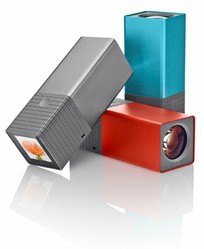


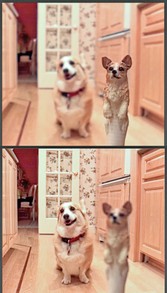

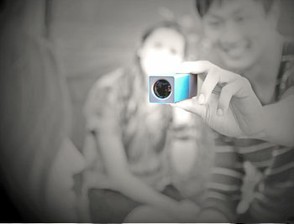







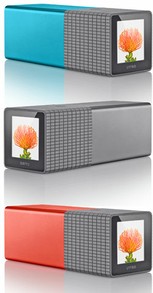
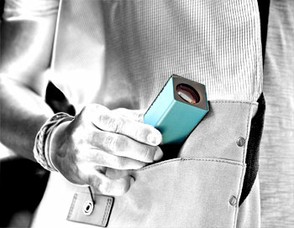

 How to Choose the Topic for your First Bookon 12/17/2012
How to Choose the Topic for your First Bookon 12/17/2012
 Why I published my first book on Amazon - and you should too ;-)on 11/30/2012
Why I published my first book on Amazon - and you should too ;-)on 11/30/2012
 What to do with Kids in Prague - Go To the ZOOon 10/30/2012
What to do with Kids in Prague - Go To the ZOOon 10/30/2012
 Choco Story Museum - Things to do with Kids in Pragueon 10/30/2012
Choco Story Museum - Things to do with Kids in Pragueon 10/30/2012

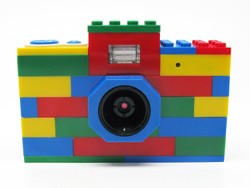
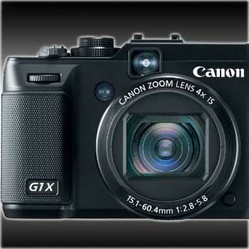
Comments
Thanks a lot, it took me nearly two days to research it and to write it up! SY
Wow! Impressive product! Impressive page!